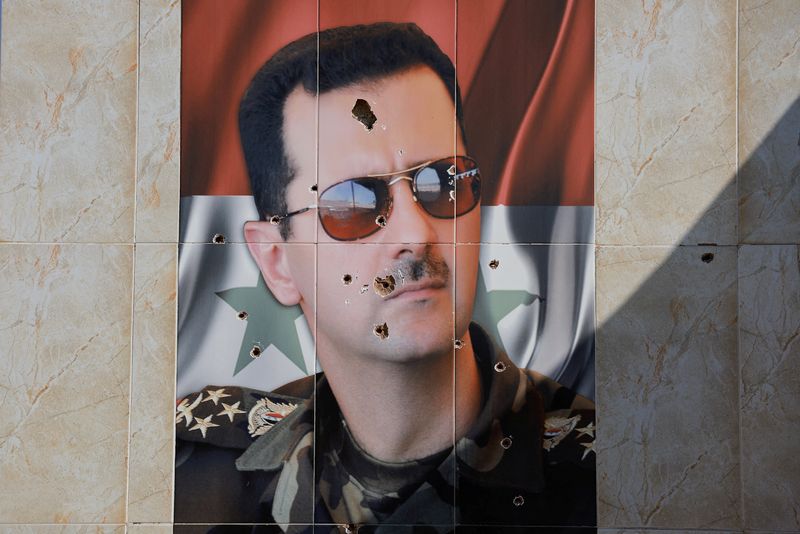By Timour Azhari
DAMASCUS (Reuters) – The vault of Syria’s central bank holds nearly 26 tons of gold, the same amount it had at the start of its bloody civil war in 2011, even after the chaotic fall of Bashar al-Assad’s despotic regime, four people familiar with the situation told Reuters.
But the country has only a small amount of foreign currency reserves in cash, the same people said.
Syria’s gold reserves stood at 25.8 tons in June 2011, according to the World Gold Council, which cites the Central Bank of Syria as its data source. That is worth $2.2 billion at current market prices, according to Reuters calculations.
The central bank’s foreign exchange reserves amount, however, to just around $200 million in cash, one of the sources told Reuters, while another said the U.S. dollar reserves were “in the hundreds of millions”.
While not all reserves would be held in cash, the drop is substantial compared with before the war. At the end of 2011, Syria’s central bank reported $14 billion in foreign reserves, according to the International Monetary Fund. In 2010, the IMF had estimated Syria’s foreign reserves to stand at $18.5 billion.
The dollar reserves have been nearly depleted because the regime increasingly used them to fund food, fuel and Assad’s war effort, current and former Syrian officials have told Reuters.
Media representatives for Syria’s new ruling administration and for the Central Bank of Syria did not respond to Reuters requests for comment regarding the size of the central bank’s reserves.
Syria stopped sharing financial information with the IMF, the World Bank and other international organisations soon after the Assad regime put down pro-democracy protests in 2011 in a crackdown that spiralled into civil war.
Syria’s new government, led by former rebels, is still taking stock of the country’s assets after Assad fled to Russia on Dec. 8. Looters briefly accessed parts of the central bank, taking Syrian pounds with them, but did not breach the main vault, Reuters reported.
Some of what was stolen was then returned by Syria’s new rulers, Syrian officials told Reuters.
The vault is bomb-proof and requires three keys, each held by a different person, and a combination code to be opened, said one of the sources.
The vault was inspected by members of Syria’s new administration last week, two sources said, days after the rebels took control of the Syrian capital Damascus in a lightning offensive that ended more than 50 years of rule by the Assad family.
Led by the Hayat Tahrir al-Sham group, a former Al Qaeda affiliate that has long-since disavowed those ties, the new administration has quickly set up a government and is consolidating control of state institutions.
Reuters could not access the central bank vaults.
BACK AT WORK
The central bank’s headquarters, a broad white building in central Damascus, fully reopened on Sunday, the first day of the working week in Syria.
It was teeming with employees as well as people looking to access dollars, while others were carrying out sacks full of Syrian pounds.
Besides its meagre U.S. dollar reserves, the Syrian central bank can currently count on several hundred million dollars’ worth of Syrian pounds in its reserves, one source said.
New foreign currency inflows dwindled because Syria lost its main source of foreign income, crude oil, when Kurdish fighters and other armed groups seized the fields in the east of the country during the course of the war.
Syria has also been targeted by strict Western sanctions and the United States has sanctioned the central bank itself and blacklisted several of its governors.
But the sources familiar with the situation told Reuters the gold was never liquidated in order to keep sufficient collateral for the Syrian pounds circulating in the market.
The Syrian local currency has depreciated from around 50 pounds per dollar before the war to around 12,500 as of Monday.
Syria’s new administration has demanded the lifting of international sanctions to revitalize the economy, rebuild the country from years of war and encourage millions of Syrian refugees to return.
But U.S. and European officials have said they will have to wait and see what kind of administration the country’s new Islamist rulers put in place.

